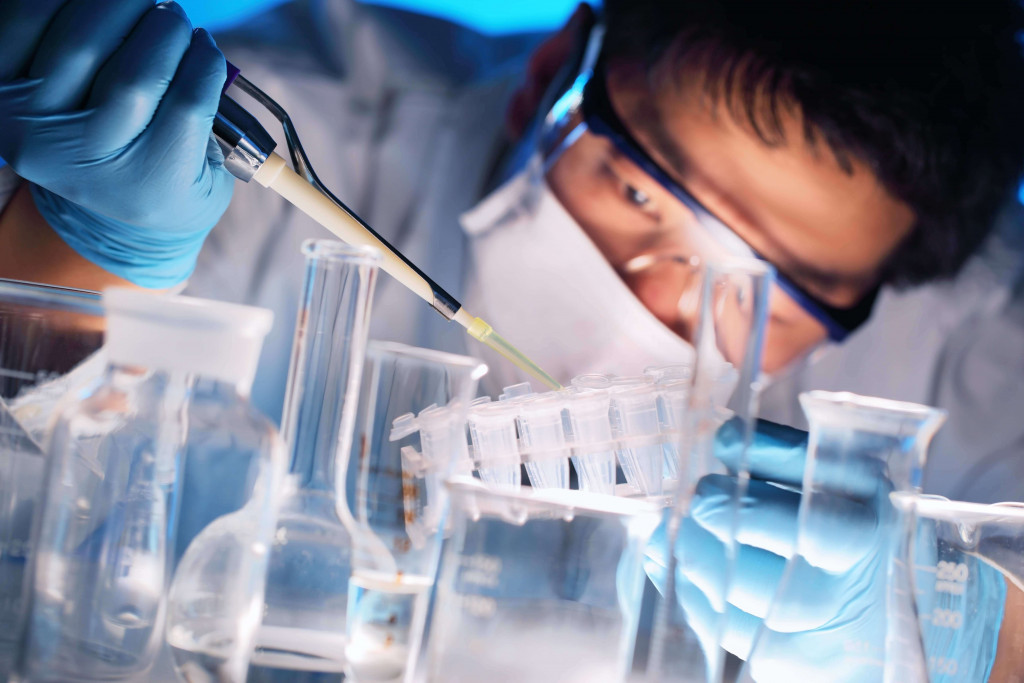An integral part of keeping laboratories safe for the workers is to diligently practice policies that prevent and eliminate accidents. While the law mandates laboratories to be safe, clean, and hygienic, not everyone follows the rules to a T. In most cases, laboratories are left on their own with the occupants the ones required to keep it clean and safe. But what happens if the occupants themselves faltered? This is when accidents happen and cause damages to life and properties.
This is why if you’re in the business of dealing with chemicals or manufacturing food, for example, it’s time to take a look at the process your workers follow. The past year has upended everything, but now that lab workers are going back to their labs and experimenting with chemicals once more, it’s time to review your safety and hygiene policies. Doing so will save your lab and the people who work there.
The Right Time to Clean
While the idea is to clean the workspace after every use, the safest thing to do is for everyone to check the instrument before starting to work. Every user expects the previous user to have cleaned the instruments after they used them. But, control is always better than simply trusting the others to keep the lab clean. Before anyone works on anything in the lab, make sure to inspect every nook and cranny of the workspace and the instruments.
Lab workers should clean the chemicals and toxic substances from the instruments after every use. They should use the right cleaning agent for them. But certain equipment such as the cytostatic benches can be disinfected before and after each batch production. Being aware of the cleaning schedule will keep everyone safe. At the same time, make sure to schedule a thorough cleaning of the lab and all its instruments every week.
New Protective Materials
Have you heard of metallic nanoparticles coating? Those in industries such as chemical labs and food safety are already using this material to prevent corrosion in the equipment and to easily sanitize instruments. The restaurant business uses this coating for areas near the commercial metal sink because those are the areas where plates, cooking utensils, and pans are placed after washing. The nanoparticles prevent contamination and the spread of bacteria.
Metal nanoparticles have several properties that make them viable for use in labs and commercial kitchens. Among their many properties are optical polarizability, antibacterial activity, electrical conductivity, chemical properties, and biocompatibility. Look at the possibility of using nanoparticles coating for workstations in the lab.

Ventilation
The importance of proper ventilation was a big thing in the past year. The coronavirus spreads easily in indoor quarters. This is why health experts advise people to stay outdoors. This also led to the cancellation of many indoor events. In the laboratory, ventilation is also necessary to keep the indoor air quality safe. Employees and lab workers need adequate ventilation for their health.
The problem, of course, is that they cannot handle hazardous and toxic materials when there is too much ventilation in a room. Instead, they have to use fume hoods and other containment devices to manipulate volatile chemicals. This is another safety profile that often goes unnoticed.
Ultraviolet Light
Germicidal lamps with ultraviolet light are already common fixtures in chemical and biological labs, as well as in facilities that handle food. They kill bacteria, molds, and other airborne toxins. However, it’s essential to remind lab workers that exposure to these lamps will harm their skin and even their eyes. Most labs do this every day, but no one should be exposed to the lights.
The skin effects of UV light vary with every person. The most common effects are sunburn, pigmentation, and hyperplasia. It’s better to use a UV light device with remote capabilities. This means that you can control it from your phone. However, it is still advisable to wear personal protective equipment (PPE), especially on your eyes, if you are entering a room that has just been exposed to UV lights.
Lab accidents such as fire, heat burns, chemical burns, and contamination are prevalent. Surveys reflect hundreds, if not thousands, of lab accidents over the years. Many of these accidents occur in labs where the occupants weren’t wearing PPEs. In fact, overall, only 40% of lab workers have been wearing PPE at all times when working in a lab. These statistics show that there are not enough safety and health protocols in laboratories. This leads to injuries and deaths, two things that could’ve been prevented by improving safety procedures in the labs.

